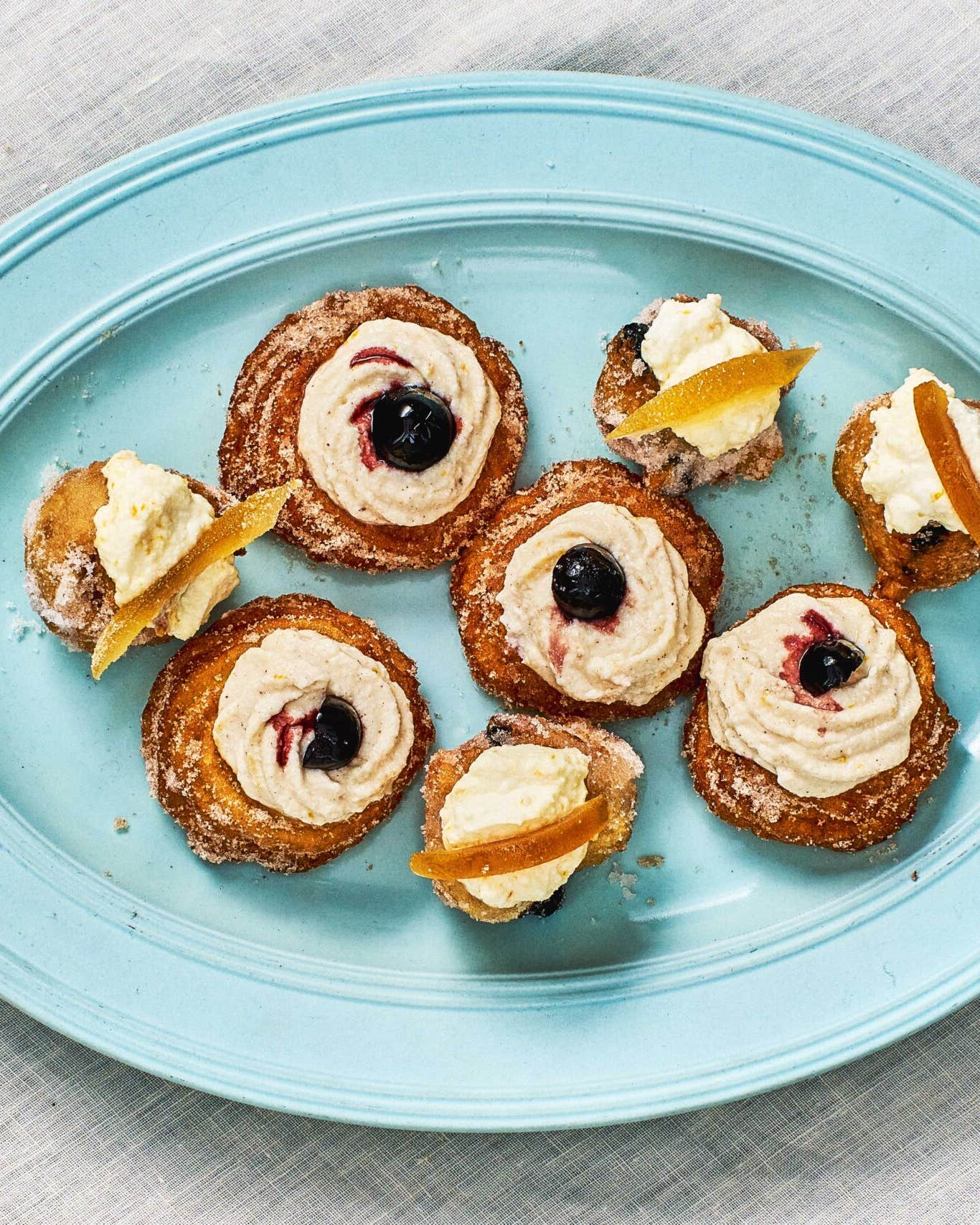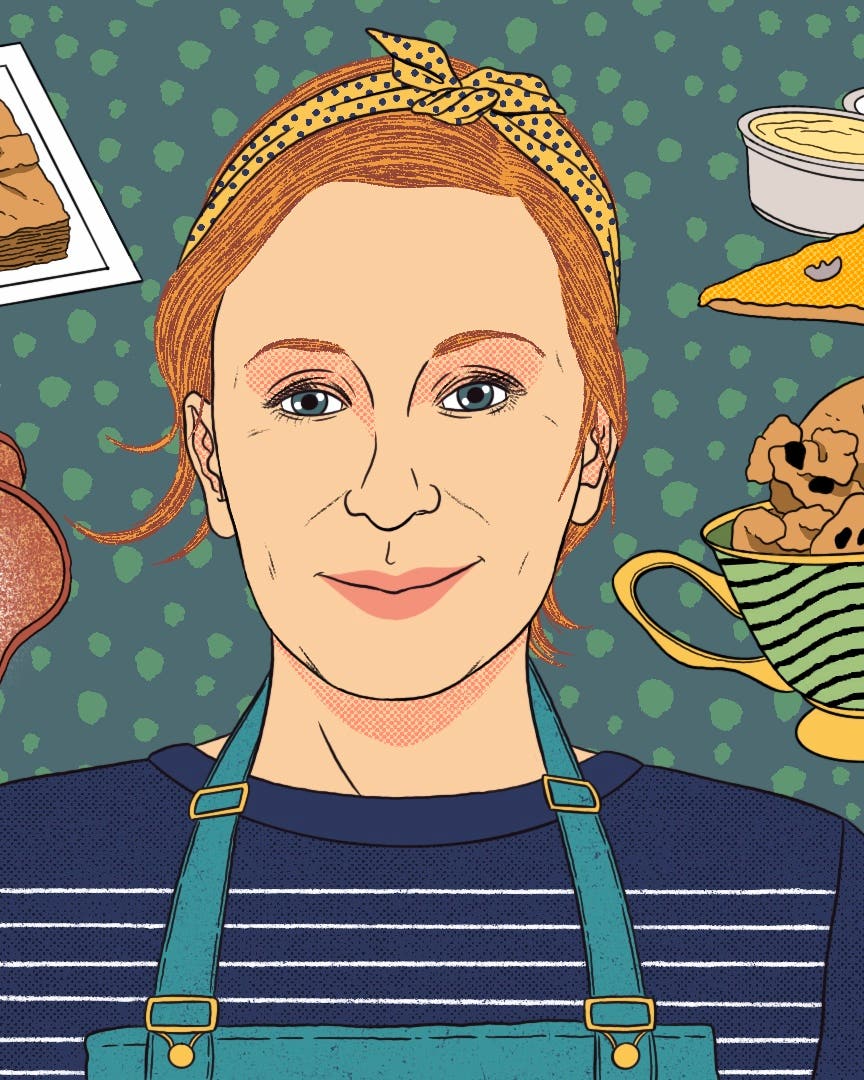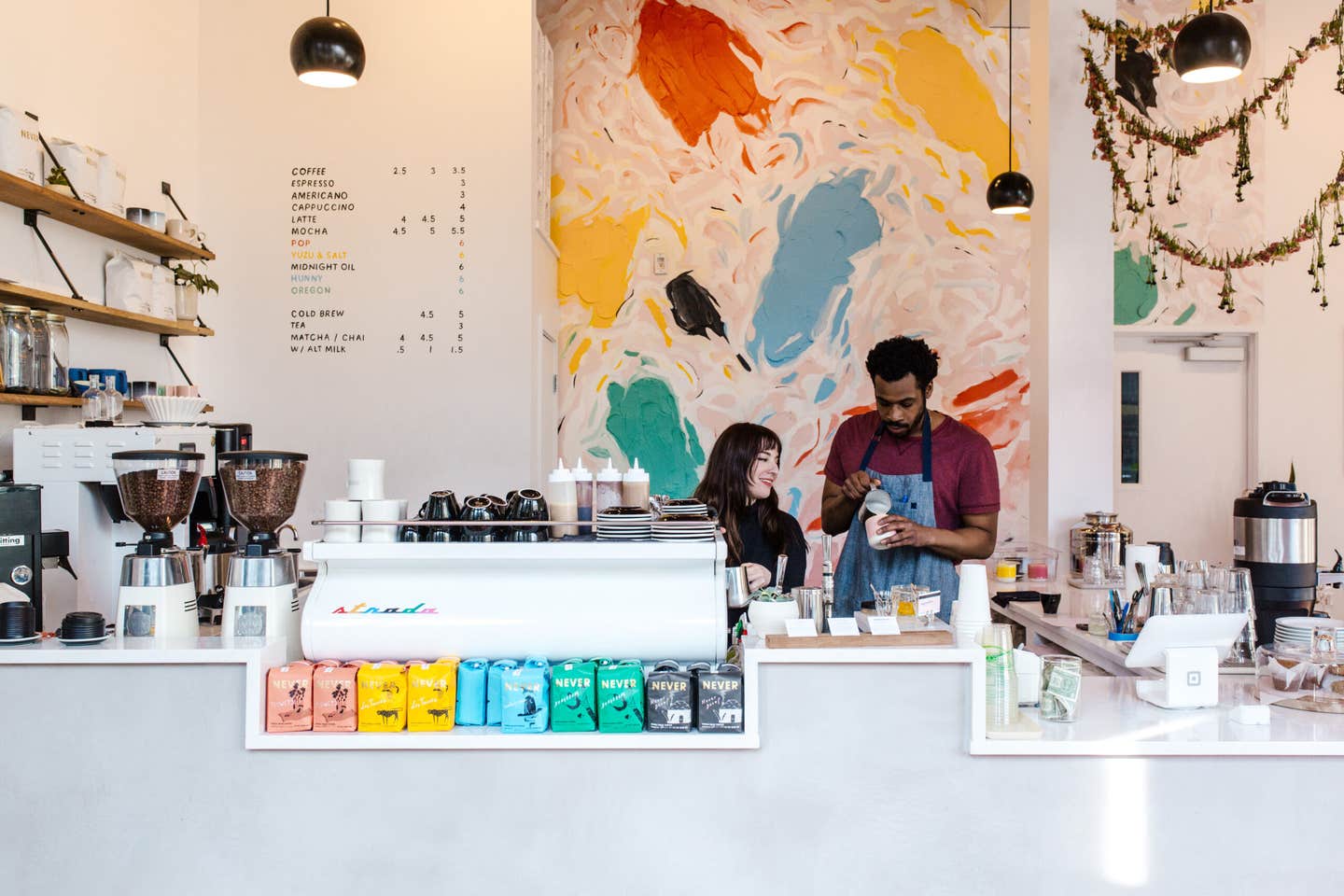These Humble Diners Embody the Unique Hybridized Culture of Hong Kong
Cha chaan teng face an uncertain future. Young people are determined to keep the establishments’ spirit alive.
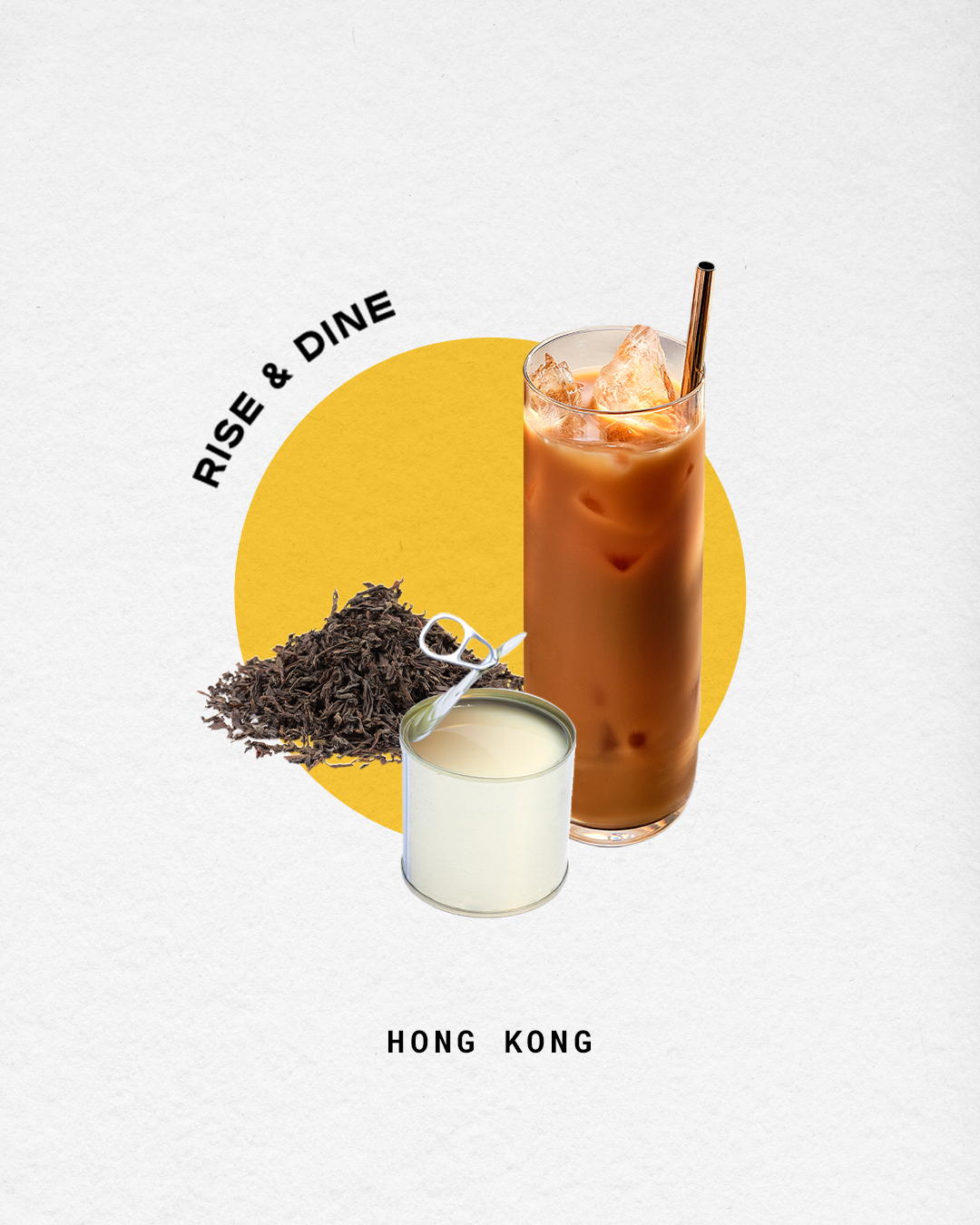
Rise & Dine is a SAVEUR column by Senior Editor Megan Zhang, an aspiring early riser who seeks to explore the culture of mornings and rituals of breakfast around the world.
Laurence Louie’s phone rang. It was his mother calling from Boston, and she wanted to give her son one last chance to take over her Chinese bakery before she retired.
Louie, who was working as a chef in London at the time, had rejected his mother’s offer the previous times she’d asked. Having cooked in the kitchens of Oleana in Cambridge, Massachusetts, as well as the Turkish restaurants Oklava and now-closed Kyseri in London, he thought of himself as a fine-dining chef; now that he’d been furloughed during the pandemic, he had plans to open an eatery of his own in England. But Louie’s time away from professional kitchens had given him space to think about what kind of cuisine he truly wanted to cook. Increasingly, the food of his heritage had been tugging at him—specifically, the buzzing and homey Cantonese cafés his family would frequent when he was growing up in Boston.
“Sunday brunch was always in Chinatown,” he recalls. For Louie’s mother, who immigrated from Hong Kong to the U.S. in 1973 and has only returned a handful of times since, those weekly visits to Boston’s cha chaan teng-inspired diners helped transport her back to her hometown.
Cha chaan teng, often referred to as Hong Kong-style diners, are humble cafés that emerged in the former British colony around the 1950s and became a bastion of the cultural confluence that has come to define the international economic hub. Serving affordable versions of British-influenced food to the working class, cha chaan teng offered eclectic menus of hybridized Canto-European dishes like macaroni-and-ham soup and baked pork chop rice smothered in tomato sauce and cheese. “It was a lot of Hong Kongers’ first step toward eating Western-style food,” says Lucas Sin, the Hong Kong-born chef behind the fast-casual American Chinese chain Junzi Kitchen.
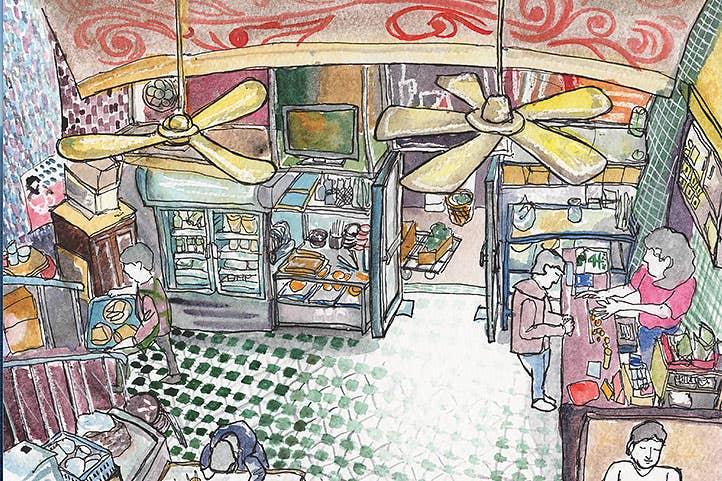
With their accessible prices, efficient service, lively atmosphere, and old-school charm, the egalitarian establishments are still popular spots today for people from all walks of life to grab a bite or beverage. “Everyone can just be themselves,” says Samuel Lai, a University of London PhD candidate currently researching the culture of cha chaan teng. Amidst ever-urbanizing surroundings, many of these old neighborhood joints have managed to remain microcosms of the 1950s and ‘60s. “When you enter those cha chaan teng, you feel like you enter that era of Hong Kong,” says Alison Hui, a Hong Kong-based illustrator who developed an art exhibition celebrating the iconic diners.
Louie and his wife decided to take his mother up on her offer. When he thought more deeply about “what kind of food I would want to honor the space and her legacy,” he says, it became clear to him that he wanted to salute cha chaan teng. “It’s close to my heart.” In September, he and his family opened Rubato in the Boston suburb of Quincy, where Louie infuses cha chaan teng classics with non-traditional flourishes—Hong Kong-style French toast topped with cookie crumb, and buttery bolo bao (pineapple buns) with a crispy fried chicken filling.
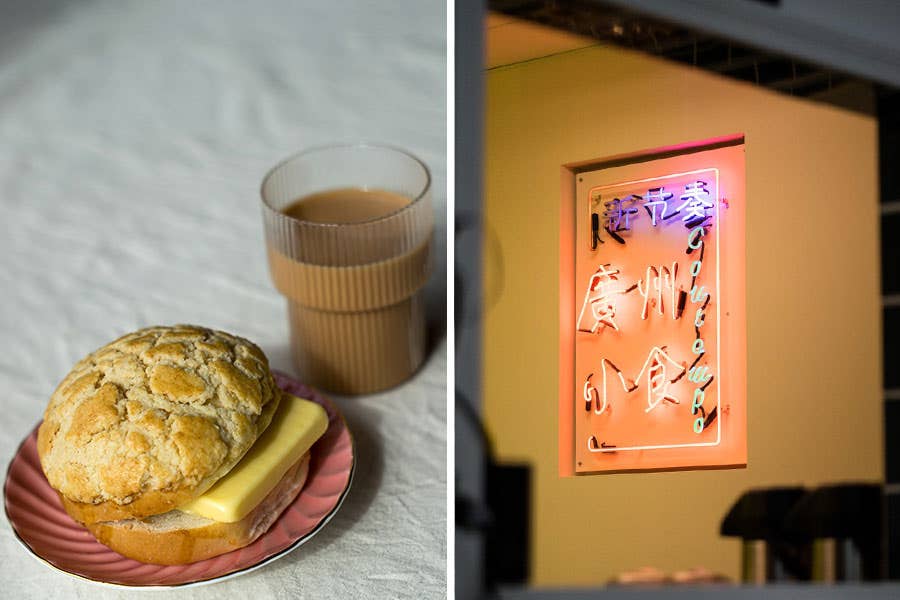
Through his homage to these diners, Louie hopes to help preserve the spirit of the establishments, many of which now face an uncertain future. “A lot of the old cha chaan teng in Hong Kong are struggling, and a lot of them have closed,” says Sin. (Mido Cafe, which opened in 1950 and was one of the oldest, shut its doors earlier this year.) As elderly owners reach retirement age, many are choosing to shutter their diners. While some want their children to pursue more lucrative career opportunities, others find the young generation uninterested in the prospect of taking over the family business, Lai explains. The role of Hong Kong-style diners in society, as community-driven establishments where regulars catch up with their neighbors and socialize with waitstaff, has also shifted alongside the advent of smartphones and social media. In today’s fast-paced, technology-driven society, “everybody looks at their phones,” adds Hui. Finally, economic strain related to rising rent and the pandemic have dealt blows from which many historic cha chaan teng couldn’t recover.
In the U.S., immigrant-run eateries reminiscent of these diners are facing similar challenges. “The places I used to go to as a kid, they’re not there anymore,” says Louie of Cantonese joints in Boston and New York City.
Both in Hong Kong and among the diaspora, there is a growing desire to see these restaurants continue to thrive. “Nostalgic feelings are so heavy in Hong Kong,” says Hui. In the wake of Beijing forcefully imposing its governance in Hong Kong, many locals feel an urgency to hold onto traditional elements that epitomize the place’s distinct culture and diversity. Cha chaan teng are “something that is very Hong Kong,” says Lai.
Many famed and cherished Hong Kong-style diners are still alive and well, supported by legions of regulars who continue to rely on the eateries’ brusque but efficient service and dependable, unchanging food. At Australia Dairy Company, Sin’s favorite cha chaan teng, he knows exactly what to expect every time he stops in for breakfast: “You sit down, they ask you two questions. The first question is ‘How do you like your eggs?’ and the second is, ‘What do you want to drink?’” he says. Minutes later, the meal arrives, prepared just as he requested.
In recent years, some newer restaurants have tried to tap into people’s nostalgia for cha chaan teng by replicating the menus of these long-standing mainstays while modernizing the business model. Many of these enterprises, Lai points out, fall short: “Nostalgia is hard to recreate,” he says, “and it entails much more than just the food.” When these new spots introduce elements like electronic ordering systems that minimize human interaction, “it changes the whole atmosphere,” he observes.
Overseas, some young chefs are eschewing imitation or modernization in favor of celebrating cha chaan teng’s unique magic, and folding it into dining experiences that also acknowledge their immigrant upbringing. Louie recalls that when he was developing the concept for Rubato, he asked himself, “How do I reconnect with something that's my own?” For him, the answer lay in the very spirit of cultural synthesis that gave birth to cha chaan teng in the first place. He drew influence from both his American upbringing and his experience cooking other cuisines professionally to infuse Rubato’s menu with his own singular flair. “We're not a traditional cha chaan teng, and we're not trying to be,” he says. “Food is ever-evolving.”
Elsewhere in America’s Northeast, the Cantonese American restaurant Bonnie’s in Brooklyn also pays homage to Hong Kong-style diners. The tiles that deck the floor “are exact replicas of the classic cha chaan teng mosaic floor tiles you would still see today in Hong Kong,” says chef and owner Calvin Eng. “We also incorporated a lot of stainless steel touches throughout the space, which you see quite often in Chinese establishments because of its practicality.” The dishes being served on those steel countertops, though, aren’t typical Hong Kong diner fare. Eng serves up one-of-a-kind creations that meld different food cultures together: cacio e pepe with fermented beancurd, McRib-inspired cha siu sandwiches, and yuenyeung-style espresso martinis.
Cha chaan teng, which usually focus on breakfast and lunch foods, also sling all sorts of coffee and tea drinks, including one that marries the two caffeinated beverages: yuenyeung. “You have sweetness from the tea and bitterness from the coffee, tied together with this velvety evaporated milk,” Sin describes. The drink’s namesake refers to mandarin ducks, which are usually found in pairs in the wild; in Chinese culture, the birds symbolize marital union. The moniker, Lai explains, speaks to how the two beverages “mesh together and become a very perfect combination of the two.”
Those unfamiliar with yuenyeung might find the cultural mash-up surprising, Lai adds. “But here in Hong Kong, we embrace that.”
Recipe
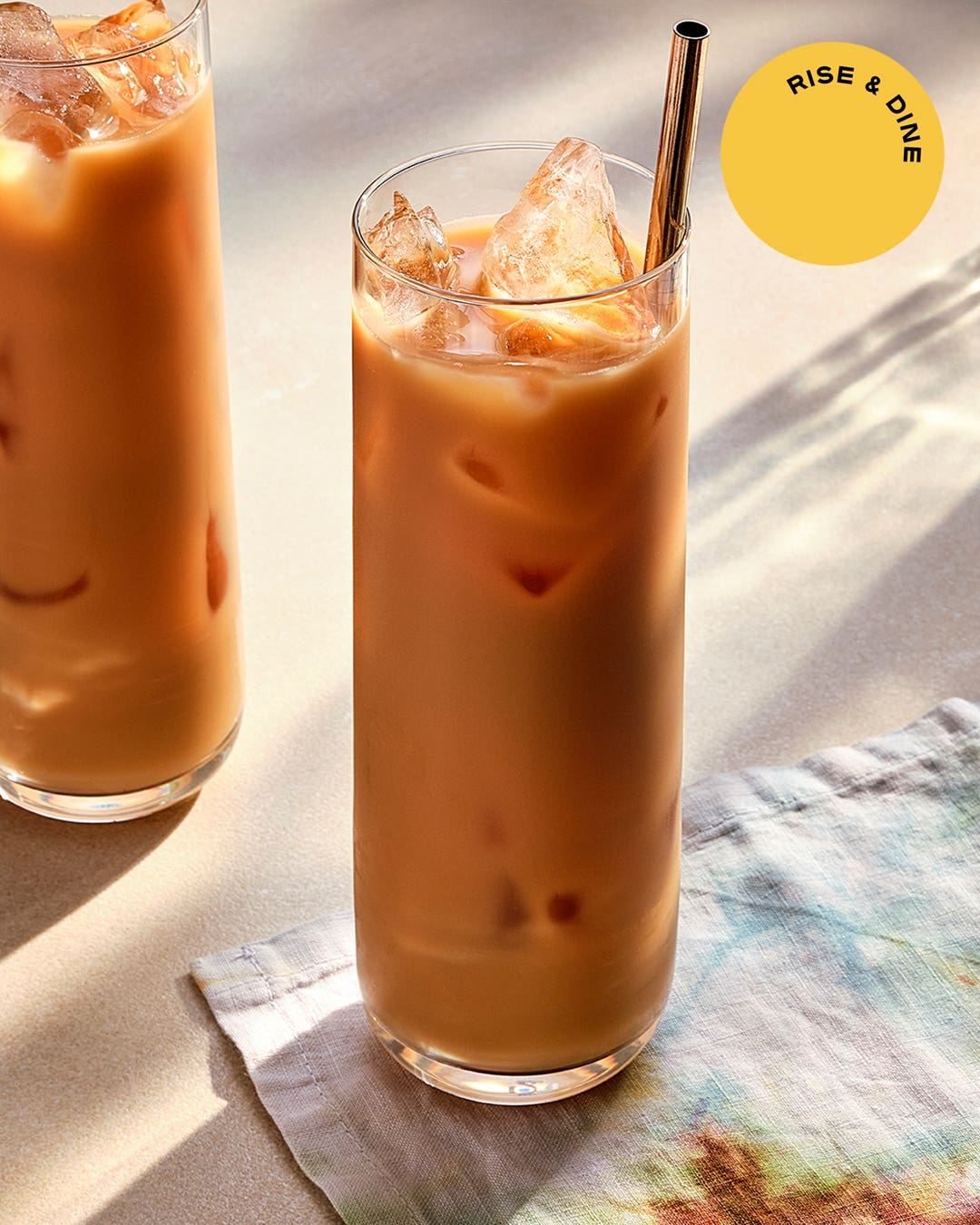
Keep Reading
Continue to Next Story







